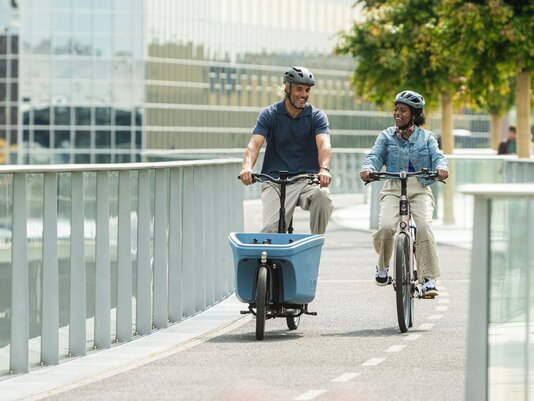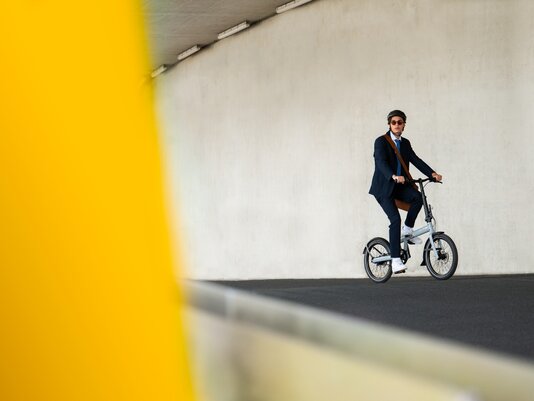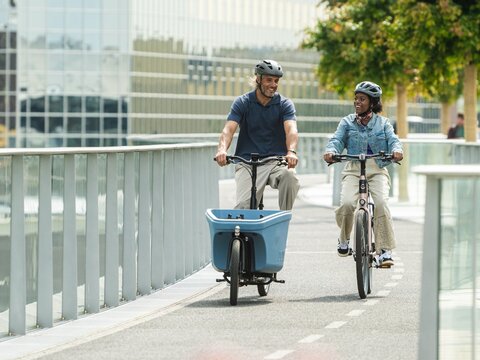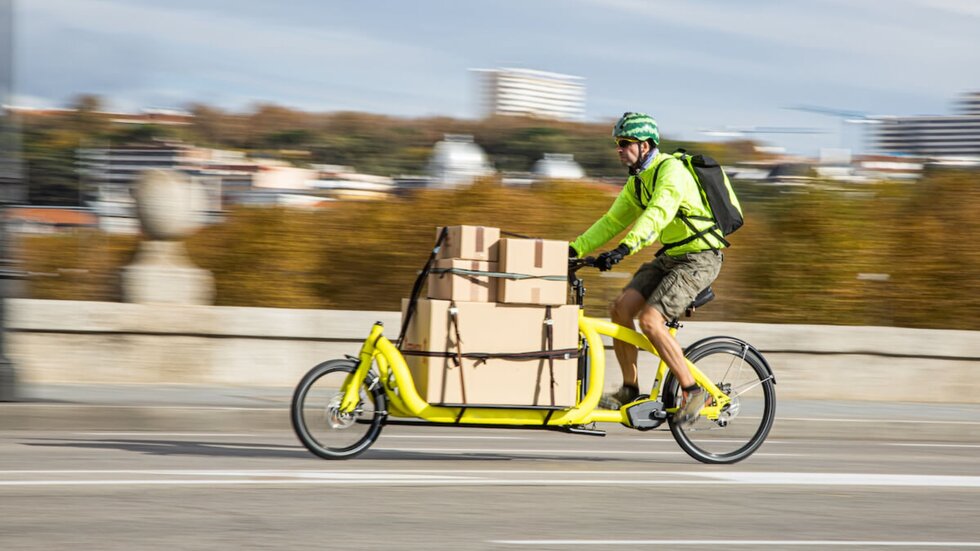Car Free Day: A glimpse into the city of tomorrow
Sep 22, 2025
•Bram van Duinen•4 min. reading timeToday is Car free day. A day when cities around the world showcase what the future of urban mobility could look like. Residents and visitors are invited to leave their cars behind and try alternatives such as bicycles, e-bikes, or public transport. Of course, this doesn’t mean that nobody uses a car at all. Businesses and residents still drive when necessary. Car free day is more of an aspiration: a moment of awareness that shows how our cities change when micromobility and other sustainable modes of transport are given more space.
Fewer cars, more living space
While Car free day mainly symbolizes change, more and more cities are introducing structural policies to restrict cars and reshape urban mobility. Paris, for example, is investing heavily in car-free zones, transforming hundreds of streets into green, low-traffic areas. Madrid has introduced “Madrid Central,” a strict low-emission zone that keeps polluting vehicles out of the city center. In Ghent, a circulation plan has turned the historic center into a largely car-free zone without making the city inaccessible. These measures result in cleaner air, safer streets, and above all: more room for people, micromobility, and quality of life.

The rise of micromobility
Within this transition in urban mobility, micromobility is playing an ever greater role. Where the car once dominated, bicycles, e-bikes, cargo bikes, and folding bikes are now gaining ground. For distances up to ten kilometers, the bicycle often proves to be faster and more practical than the car, especially in busy city centers.
And the numbers speak for themselves. Research by Grand View Horizon and McKinsey shows that the European micromobility market is growing at nearly thirteen percent annually. By 2030, the global market could reach an astonishing 340 billion dollars. What’s more, the use of shared e-bikes and e-scooters in Europe grew by almost forty percent in 2022 compared to the year before. These figures prove that micromobility is not a passing trend but a lasting and powerful force shaping the future of how we move.


The power of the last mile
An important element in the shift toward smarter urban mobility is the so-called “last mile.” In the past, many people drove their entire journey by car. Now, commuters increasingly combine different modes of transport. You might take the train to the station and then cover the last few kilometers to the office or an appointment effortlessly with a folding bike or shared bike.
Even drivers are seeking micromobility solutions for those final stretches. As city centers become harder to access and parking spaces more scarce, many turn to folding bikes to save time and reduce stress. This is especially true for electric car drivers, who often park their vehicles at a charging station and complete the remaining distance quickly and efficiently by folding bike.
“Drivers of electric cars are coming to us more and more often. Since charging stations are not always located right next to their destination, they use a folding bike from the parking spot as a convenient means of transport.”
Pieter Bergsma, Bergsma Vouwfietsen
From transport to urban logistics
The impact of micromobility goes far beyond daily commuting. Urban logistics is rapidly transforming as well. Cargo bikes deliver parcels, groceries, and even collect waste. Where delivery vans are often stuck in traffic, bicycles and other light vehicles glide easily through narrow streets.
Even independent professionals such as painters and other tradespeople are embracing cargo bikes to transport their tools and materials efficiently. This shift demonstrates how micromobility also provides smart business solutions, perfectly aligned with the broader context of sustainable urban mobility. Together, we make our cities more efficient and more livable.

“I’m selling more and more cargo bikes to contractors and entrepreneurs. They park outside the city and ride into the center with an electric cargo bike full of tools or products. It’s ideal. Delivery services also benefit from this solution. There are guys delivering coffee who come to me to pick up a cargo bike.”
Bas Lievens, Lievens Bikes
The city of tomorrow begins today
Car free day shows that the city of tomorrow is closer than we think. A city where micromobility and smart solutions for urban mobility become the new standard. At PENDLR, you’ll find everything you need to adapt to this change. From high-quality parts and accessories to the knowledge and expertise that help you grow with the rising demand.
Join PENDLR today and help build the city of tomorrow. Together, we make the daily commutes more flexible, efficient, and green.
Bram van Duinen
Performance Marketeer
Stay up to date
with our newsletter
We make the daily commutes in and around the city more flexible, efficient and green. We are your partner in micromobility.